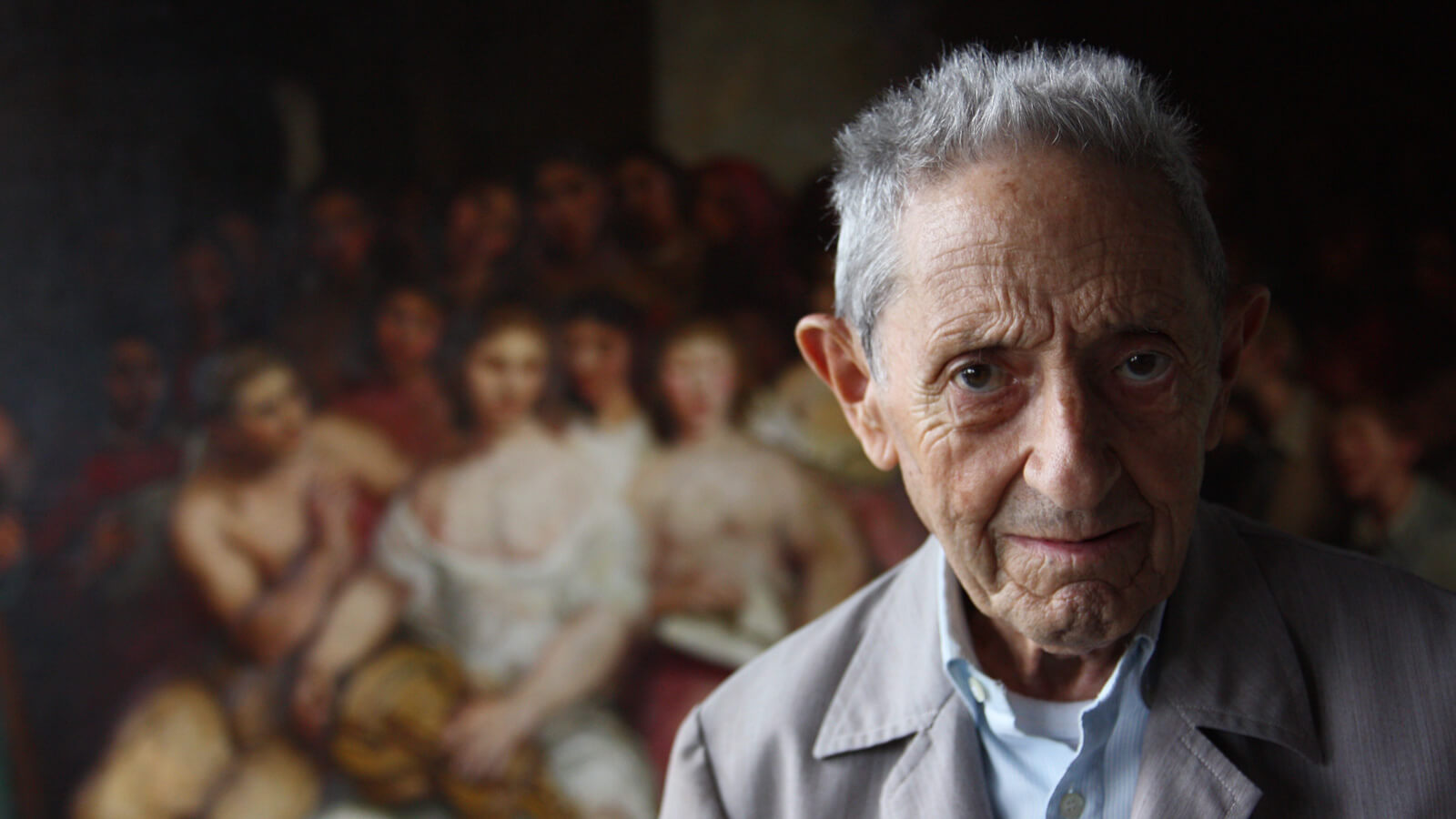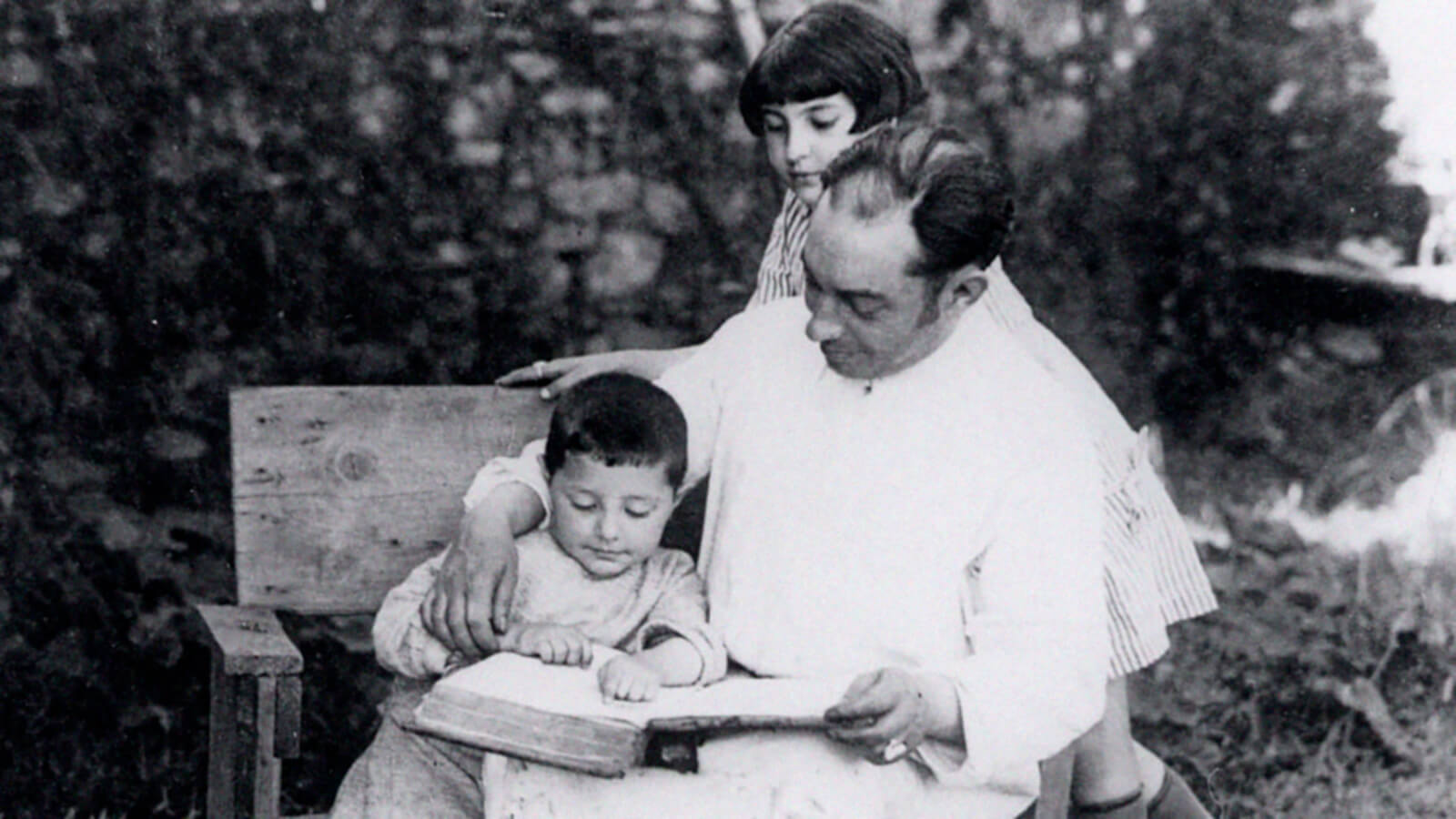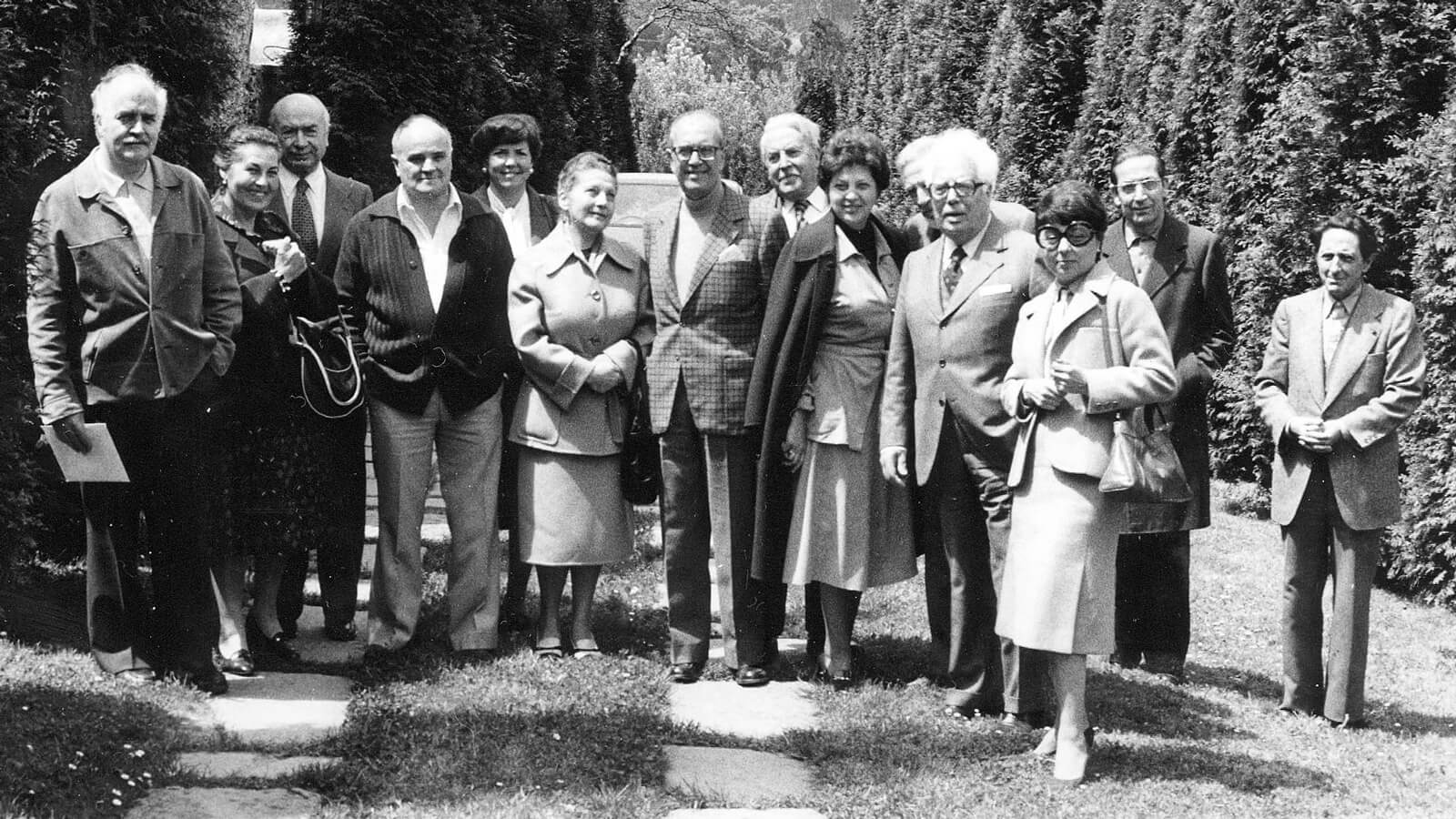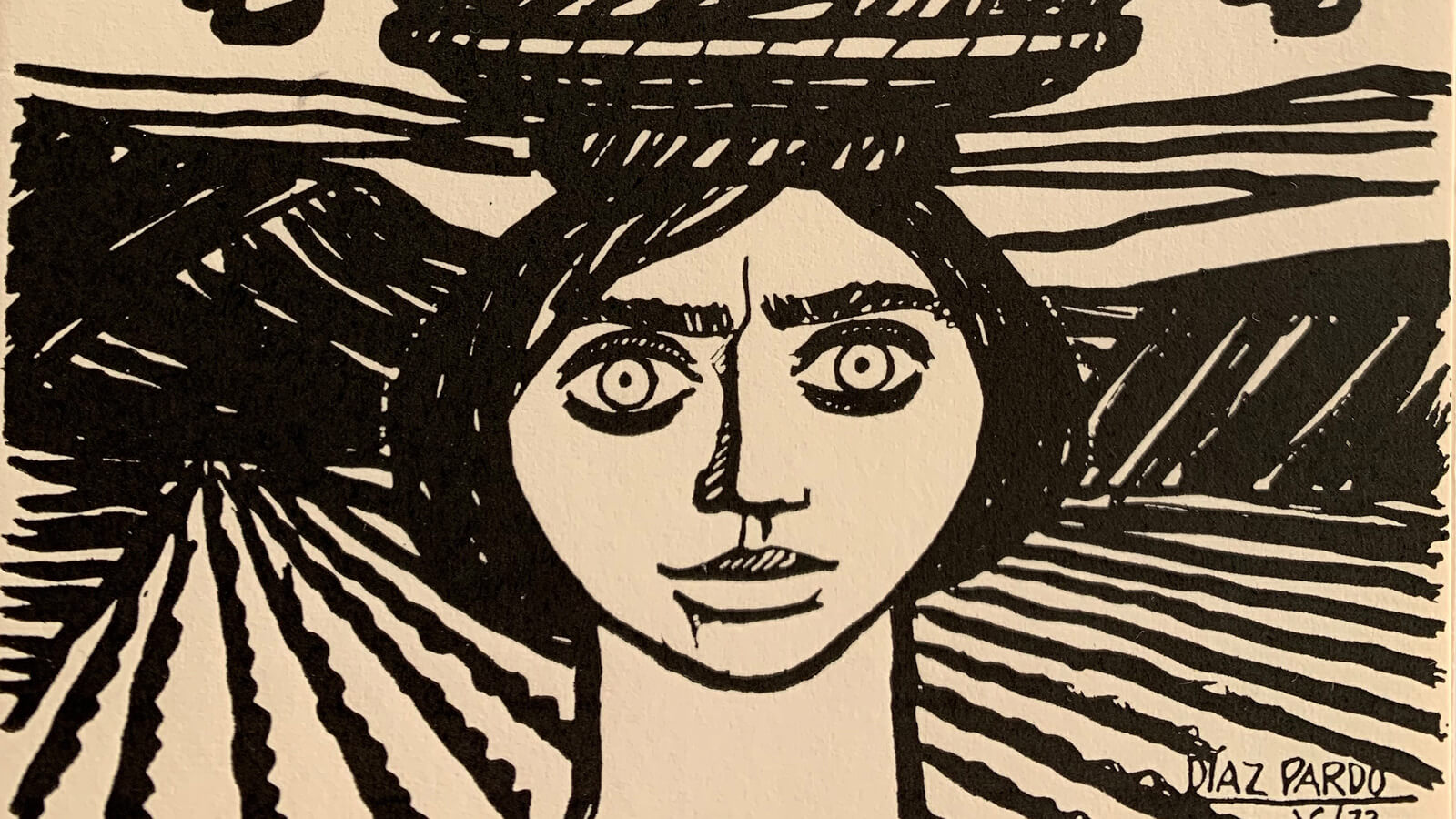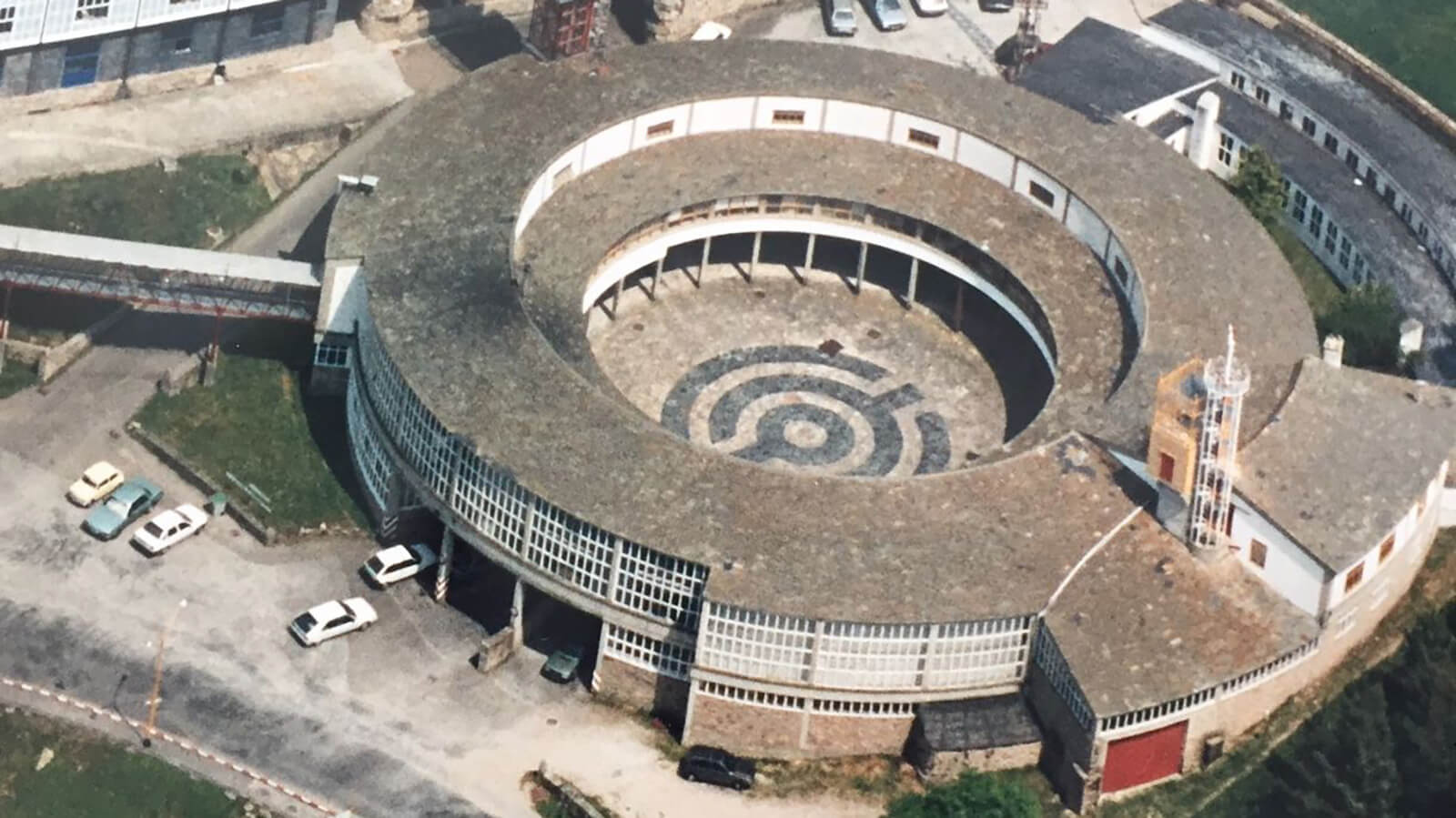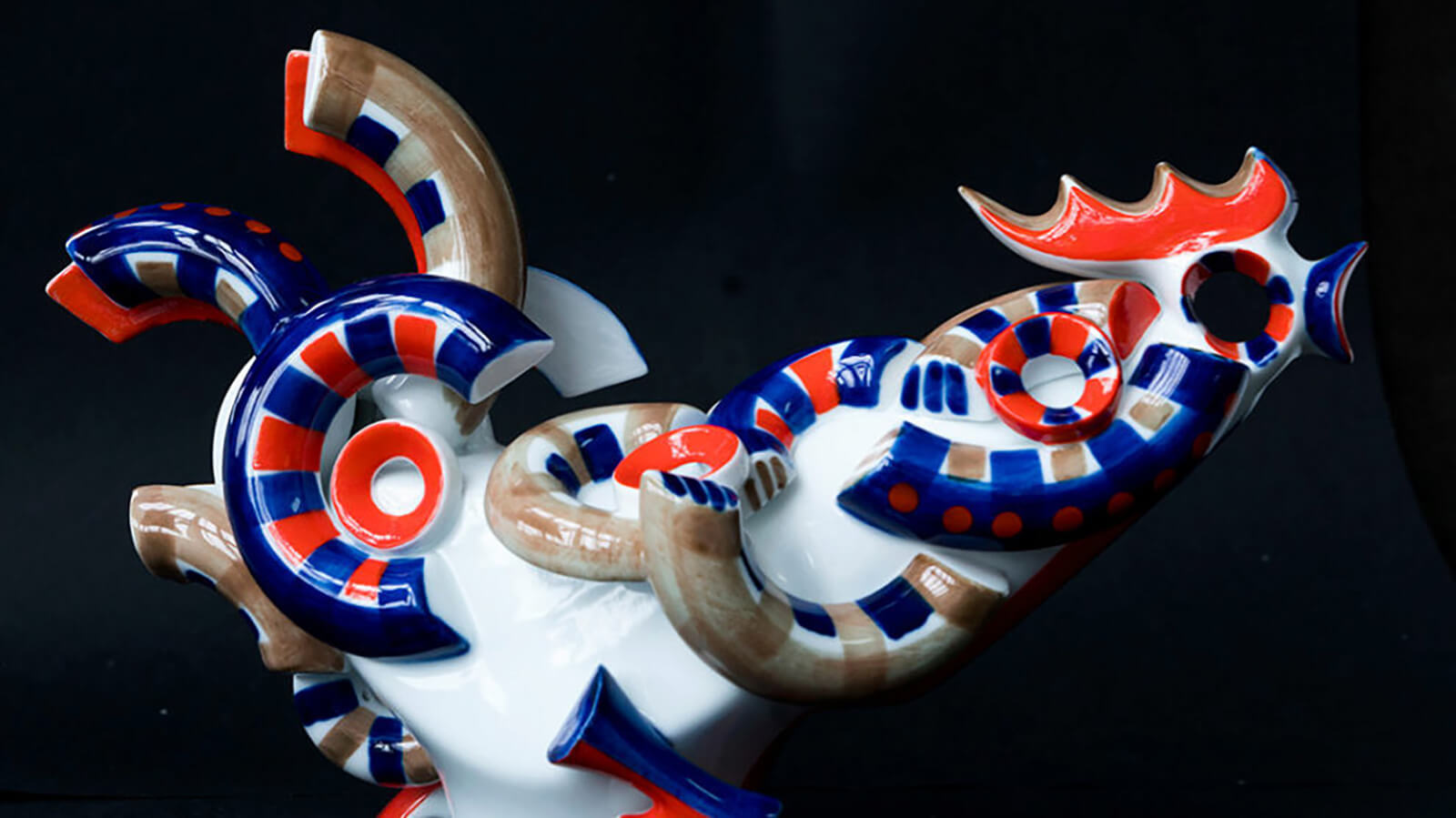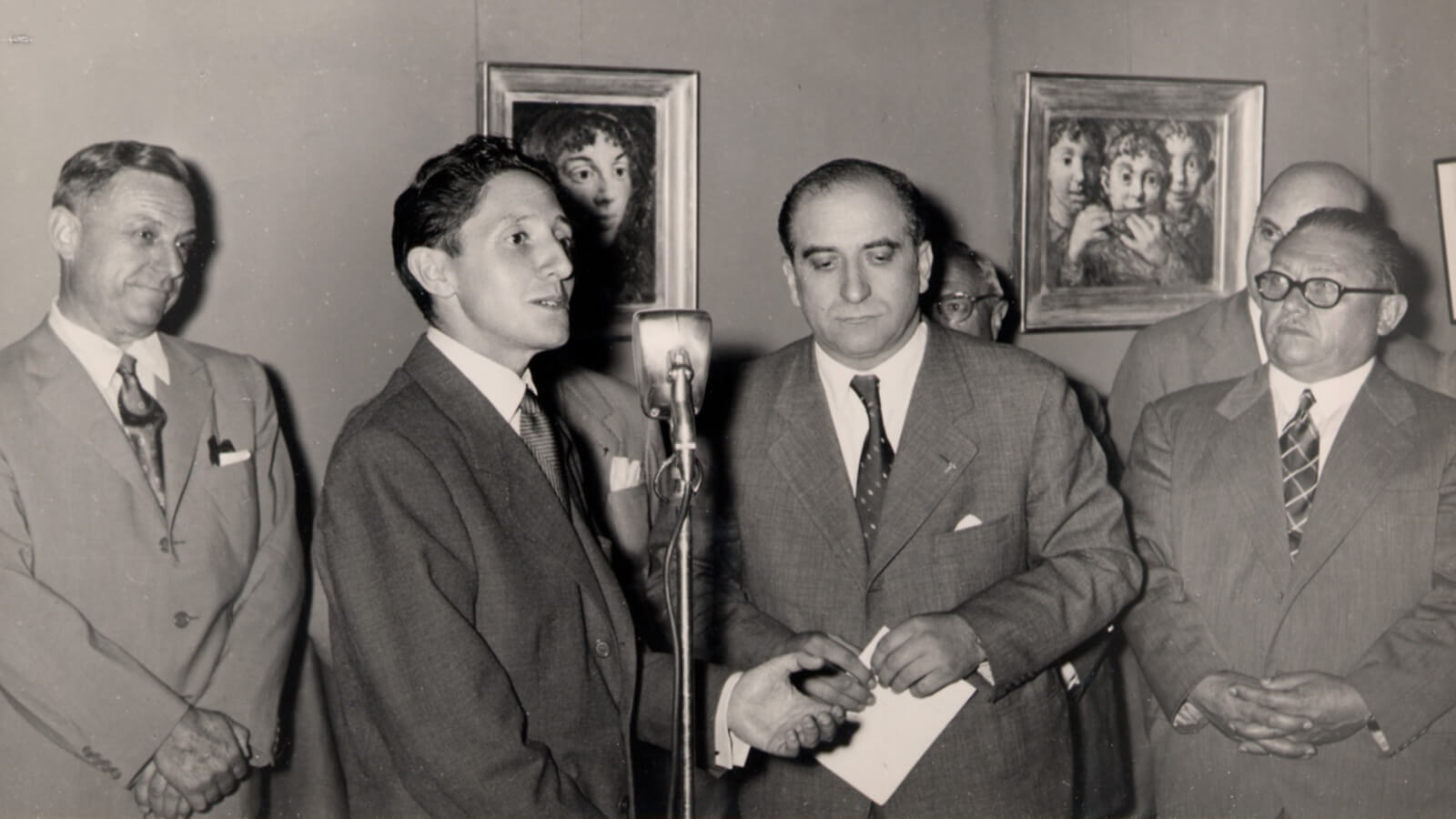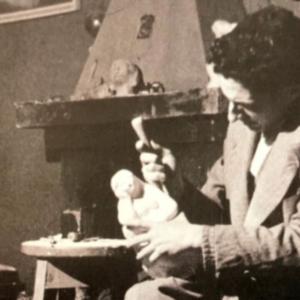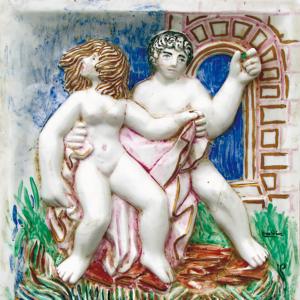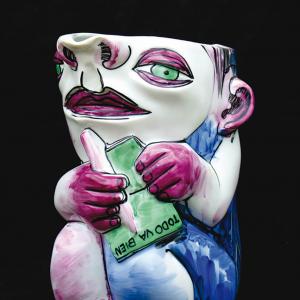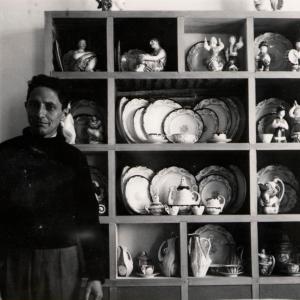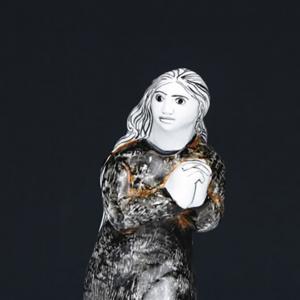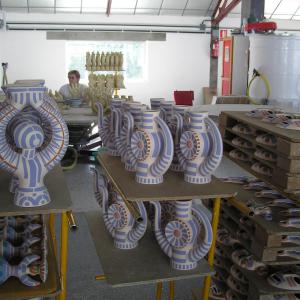The career of Díaz Pardo as ceramicist went hand-in-hand with the creation and development of his factories in Castro, Magdalena and Sargadelos, while also developing over time. Initially, Isaac created his own pieces, but with time his other functions such as production manager, machinery designer, personnel manager and many others expanded, taking him away from what was exclusively the creative side.
Díaz Pardo’s career as a ceramicist was moulded by the creation and development of his factories in Castro, Magdalena and Sargadelos, evolving with the passage of time.
Following Xosé Díaz, Teresa Pena Moreda and Fernando Arribas, we can divide the periods of his development as follows:
1947-1955, Castro: Classic or pictorial period
At the end of the 1940s, Díaz Pardo switched from Madrid to Galicia and from painting to ceramics. Recognised as a successful painter and praised by contemporary critics, he decided to set up a small ceramics workshop in the old coach house of the family estate of his wife, Carmen Arias, in Castro de Samoedo, Sada (province of La Coruña). The aim was to study the kaolinite of Sargadelos to discover more about its quality. In this task he was assisted by Jacinto Alcántara, director of the Ceramics School of Madrid. The test results were positive and the resulting ceramics proved to be high quality. The next step was to create a company. In 1949, the Fábrica de Cerámicas do Castro was established by Díaz Pardo himself, Federico Nogueira Pazo and José Rey Romero. The pieces from Castro began to be sold and proved to be a success. In 1952 the factory had 100 workers.
His ceramic work can be divided into three periods: 1947-1955, classic or pictorial; 1955-1968, functional and transitional; and 1970, concerned with creating a distinctive style.
Initially the production consisted of reproducing a limited number of pieces created by Isaac, copying his pictorial work using a traditional system of casting. They were exhibited for the first time in 1951. After this, the first table services began to be made, using a very high-quality fine translucent porcelain. This period included decorations in the series “children”, “horses” and “heads”. In the decorative pieces, there were many forms of women, particularly the Candelabro feminino (Female candlestick), Nu tendido (Reclining nude), various jars (depicting vices, heads and sphynxes), Pondaliana, Tangaraño and the figure-bottles where there is a clear development to less classic and more expressionistic forms, but with an unmistakeable character.
1955-1968, Magdalena: The functional and transition period
The success of Castro crossed borders and reached Argentina, from where in 1955 Isaac received an invitation to repeat the Castro model in Magdalena, 100 kilometres from Buenos Aires. At this time, Díaz Pardo was working with Luis Seoane on the Buenos Aires-based magazine Galicia Emigrante. The publication also publicised Díaz Pardo’s ceramics activity through a number of articles.
Isaac went to Argentina on a trip through which he would enter into contact with the European avant-garde based in Argentina, with a group of exiles established there and with Luís Seoane. These events would change his life and work for ever. He initiated this new period in December 1955 with an exhibition in the Galician Centre of Buenos Aires, entitled Isaac Díaz Pardo Cerámicas y Pinturas (Isaac Díaz Pardo Ceramics and Paintings).
The meeting between Díaz Pardo and Seoane in Buenos Aires would culminate in 1963 with the creation of the Laboratorio de Formas.
During this period in South America, Isaac consolidated and perfected his technical knowledge as a ceramicist. At the production level, there was a simplification of forms, with more abstract and geometric decorations. The table services were plain, without relief: the forms were called Cilíndrica, María and Pomba, simpler and more functional.Díaz Pardo’s meeting with Seoane in Buenos Aires would culminate in 1963 with the creation of the Laboratorio de Formas, which would function as a space for discussion and the creation of theories that could form the basis of production. The search for a balance between the avant-garde and tradition and between art and industry would be a constant design element.
An example would be the decorations Portomarínica, Monférica or Castrondourica, which while being based on the Galician cultural tradition, are at the same time avant-garde designs. In the Magdalena (Buenos Aires) factory, Isaac would only sign one decorative piece, a Mary Magdalene.
Isaac Díaz Pardo’s ceramic work went further, and represented one of the most important cultural and business experiences in contemporary Galicia.
1970 Sargadelos: The period of difference.
In 1968 Isaac abandoned all activity in Magdalena and focused his energies in one of the basic projects of the Laboratorio de Formas: the continuation of the work of Sargadelos, the old pottery factory that had been founded by the Marquis of Sargadelos in the 19th century in the province of Lugo.
The cobalt blue of the decoration became an identifying feature of the Sargadelos porcelain.
Following a period of tests in a small experimental plant, the circular plant designed by the architect Andrés Fernández-Albalat was opened in 1970. This marked the start to what is called the Fifth Period of Sargadelos.
The production included cobalt blue in the decoration as a distinguishing feature and from its ovens emerged high-temperature porcelain table services, decorated under the glaze. The decorations were functional and geometric, with symbols from popular Galician culture. Isaac and Seoane studied the forms of the past, looking for a perfect balance between the past and the future, the traditional and the modern.
The Seminario de Sargadelos was created in 1972. It would be responsible for putting into practice the technical principles of the Laboratorio de Formas. The progress made, use of different materials and experimentation of new technical possibilities, would be used by Isaac to create modular pieces and pieces that could be assembled, or articulated figures, such as Elemento Modular A, B ou C (Modular Element A, B or C).
For over 60 years, he worked on a model of company created for and on behalf of Galicia.
The ceramic work of Isaac Díaz Pardo transcended its material nature and represented one of the most important cultural and commercial experiences of contemporary Galicia. Over more than 60 years, his corporate model worked through and for Galicia.

